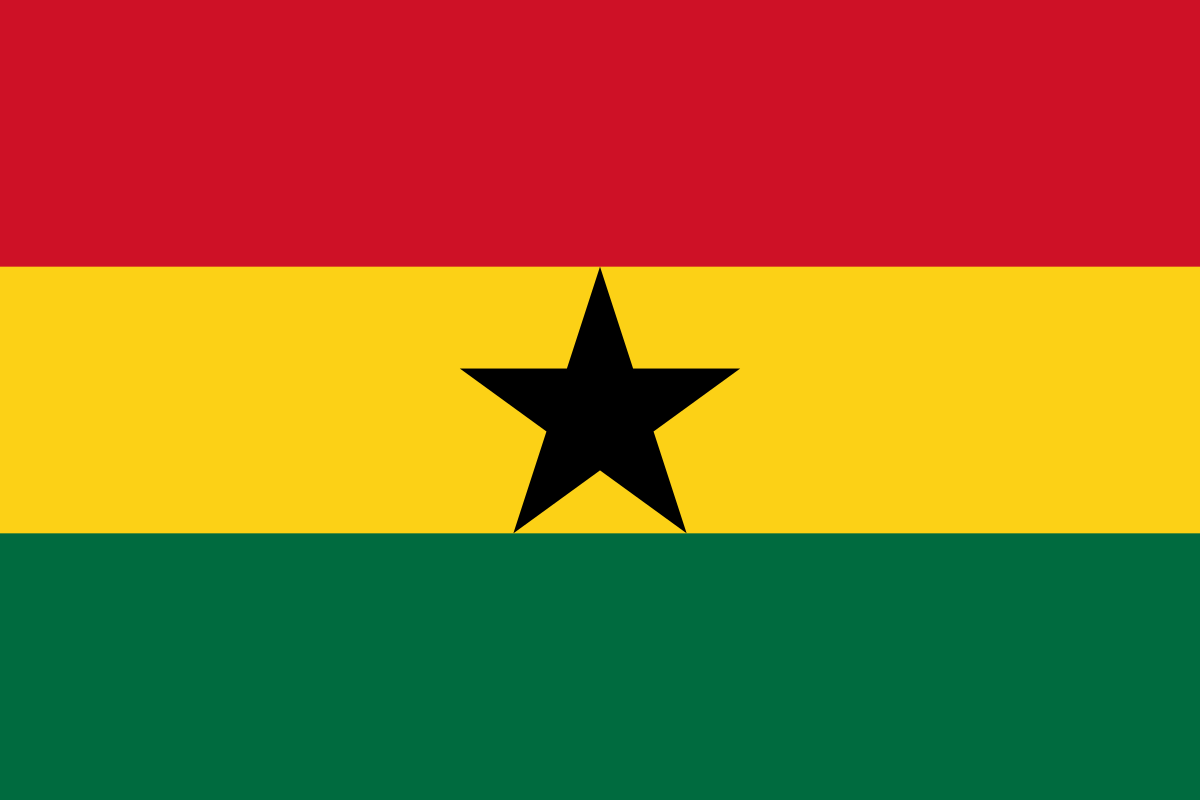Ghana has an average temperature that is pleasant all year due to its proximity to the equator.
There are two distinct seasons in its mild tropical climate: rainy and dry. Each of them has advantages and disadvantages of its own. The rainy season is the greatest time to explore the country’s north because the rest of the year may be oppressively hot, but the dusty dry season is when you can see the most species there. There is always plenty to see, do, and experience in Ghana, including a schedule of vibrant festivals that serve as one of the country’s distinctive calling cards.
In general, higher elevations like the Ashanti Uplands see Ghana’s mildest temperatures, with humidity clinging to the air.
Visit during the peak season to observe wildlife and take part in celebrations (December to March)
The dry season in Ghana, which lasts from November to March, coincides with the high season. The network of well-maintained roads in Ghana makes it very simple to explore the entire country when there is little to no rain.
Travel to the country’s south, including to Accra, the capital city, is strongly recommended during these months. Due to the Christmas season and festivals like Afrochella, which celebrates African music, fashion, art, and culture, many Accra locals believe December to be the ideal month to travel. The Ashanti Akwasidae festival, which takes place in Kumasi, is one annual event to keep a watch out for.
According to the Ashanti calendar, it occurs every sixth Sunday and features lots of dancing and drumming as well as a magnificent procession of the Ashanti king and his retinue.
The Saharan winds that sweep over West Africa and into the Gulf of Guinea cause the air to become fairly dusty and dry during this time, but there are also fewer rainstorms, lower humidity levels (which means fewer mosquitoes), and slight (but perceptible) temperature decreases.
These chilly, dry breezes are known as harmattan, and they contribute to a hazy sky as well as dry skin, eyes, and throats. Apply some locally produced shea butter to keep your skin hydrated, and keep in mind that a cloudy sky can result in poorer photographs
The dry season in Ghana is still the ideal time to see wildlife, especially from December through March, which is the driest month of the year there. The elephants of Mole National Park and other reserves will congregate around any remaining drinking holes at this time, and because of the more desolate surroundings, it will be simpler to see monkeys, hyenas, and buffalos.
Ghana’s hottest month is usually March, however, showers can happen at any time and offer a cooling reprieve.
Enjoy harvest celebrations, fewer people, and trips to northern Ghana during shoulder season (September to November)
September and October are when the majority of visitors from Europe and North America have already arrived and left, and the nation’s harvest celebrations are beginning, even if they are still a part of the rainy season. The north of Ghana, where it has been regularly raining and cooling off, is the perfect time to visit. Although the southern rains have stopped by November, the Sahara winds haven’t yet begun to blow. For those seeking fewer people, comparatively pleasant weather, and a wide variety of events, all three months are excellent times to travel.
The low season is ideal for Western tourists, photographers, and anyone interested in Ghana’s remote regions (April to August)
The wet season, which can be warm and muggy but has cooler temperatures and a profusion of lush foliage, is Ghana’s low season. Rains can range from a brief sprinkle to a deluge that lasts for several days.
Due to flooded roads, inland travel may be hindered during this period, but there is still a ton to see and do in the country’s outer areas.
The three months of April, May, and June are among the wettest of the year in Ghana’s southern region. After a brief lull in the rains through July and August (though showers are still frequent), they resume in September and into October. This is an excellent period for photography because of the generally clear skies and the abundance of foliage. Rainfall is constant up north, where it can lower temperatures and make the weather more tolerable. Take extra precautions though, as this is also when mosquitoes are most active.
Even though these wet months are Ghana’s low season, the country experiences an uptick in European and North American visitors between June and August (Ghana’s coldest month), so book your flights and accommodations early.
During Ghana’s dry season, animals like this male bushbuck seek water, making them easier to see.
Keep January free for wildlife viewing.
According to the Harmattan winds, January has the least rainfall in the country overall. There are several wildlife sightings.
In February, keep your binoculars handy.
The Harmattan winds continue to blow, as do the animals, who congregate around watering holes in locations like Mole National Park.
March will be hot and humid.
The hottest month in Ghana in March, though rains might start at any moment. Squalls occur in the north as well: strong, abrupt winds that last barely a few minutes.
Independence Day is a major occasion.
Ghanaians are looking forward to the rains towards the conclusion of the dry season.
In April, the rains finally arrive.
The wet season and Ghana’s low season officially begin in April. Heavy rains can frequently wash out highways, particularly in the country’s centre, although reliable infrastructure keeps most roads safe to travel.
Important occurrences: Dipo
In May, expect rain and lower temperatures.
Rainfall in May is often heavy, especially in the country’s centre and south. Temperatures are also slightly lower.
Important occurrences: Aboakyir
Accra’s scene picks up in June.
June, Ghana’s wettest month and still the low season is also when European and North American tourists arrive for their summer holidays, making cities like Accra exceptionally bustling.
Dzimbi Festival is a major event.
In July, head north to escape the heat.
In July, the rain usually stops in southern Ghana, and tourism from Western countries remains high. It’s a fantastic time to visit both Ghana’s northern and southern regions because the weather is slightly cooler in the north while the days are normally pleasant and dry in places like Accra and the Cape Coast.
Republic Day, Bakatue Festival, and PANAFEST are major events.
PANAFEST, held every other August, celebrates African culture.
Although the rains are still on hold in southern Ghana, August is generally the windiest and coldest month in the country. European and American tourists continue to arrive in droves, and PANAFEST usually extends into the month in odd-numbered years.
Chale Wote Street Art Festival and Homowo
Colourful processions are a feature of many annual festivities in Ghana, including Fetu Afahye on the Cape Coast. Getty Images / MyLoupe
In September, we celebrate the harvest.
Most Western visitors have left, and while the rains have returned to the south, it’s time for the harvest festivals to begin. The rains continue to fall in the north, but the air is cooler and more bearable than in other months.
Fetu Afahye’s key events
In October, enjoy pleasant weather.
The overall climate in Ghana remains colder and less humid, and the Harmattan winds are still some distance away. Harvest festivities are underway, and the rains have largely ended in southern Ghana and are winding down in the north. October is an excellent time to visit.
Ngmayem is a key event.
In November, the weather remains pleasant throughout Ghana.
Another nice month to visit is November. The rains subside in the south and finish in the north, and the weather remains cool and humid. The Harmattan winds are preparing to blow, but they are frequently delayed.
Hogbetsotso is a key event.
In December, join the returning Ghanaian diaspora for a visit.
December sees a lot of rejoicing and merrymaking as the Ghanaian diaspora returns home to celebrate Christmas, while some shops are closed so that family can be together. December is a fantastic month to visit for a more authentic experience. While the Sahara winds have most likely increased, so have wildlife observations in the north, as more animals seek out the restricted number of water sites.
Farmers’ Day, Christmas, and Afrochella are all important occasions.



